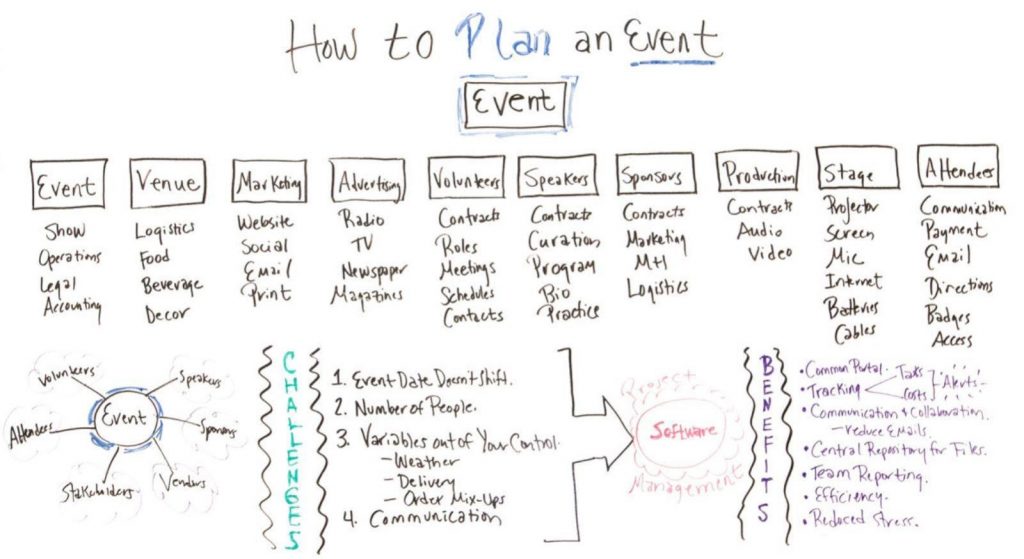Valuable tips for preparing your attendees & team for a virtual event
The phenomenon of virtual events has seen enormous hype since 2020. Adoption has been high owing to the pandemic and the owing to the multitude of advantages the trend is here to stay.
To increase the success rate of your virtual event, you should prepare your attendees as much as your team members, well in advance.
Plan your approach to include pre-event communication. A pre-event communication strategy creates anticipation among team members and attendees while generating confidence among the organisers.
Preparing your team members helps get the correct information across at the right time so that planning and execution can be carried out easily. Pre-event communication helps them understand, get inspired, and feel excited about participating in the event.
We’ve prepared a separate list of strategies for attendees and team members. Let us dig in deeper to know more.
Table of Contents
Preparing Your Attendees
The goal of a virtual event is to offer attendees an experience that is as close to a face-to-face event as possible. Consider the following practices:
Map your attendees
Before anything else, understand your attendees. You can perform an attendee mapping exercise. That will help you spot the areas that need more emphasis, understand the attendee’s expectations and their take away
Make attendees familiar with the virtual platform environment
Plan to onboard your participants more confidently by sharing education materials before the event. Share a recorded navigation video giving a virtual tour of the virtual environment, like this video by Airmeet.
Share a complete formal descriptive guide with pictures to show the step-by-step sign up process and ask attendees to explore the interactive features. If you plan to keep a Q&A session, point out the option and demonstrate the procedure for how attendees can ask questions.
It’s wise to share the FAQs with the guide so that most generic and basic queries are resolved straight away.
Allow early login before the event
Share the login details just after the registration process, followed by weekly reminders. Closer to the event date, reminders can be sent one week prior, two days before, and the last one, an hour before the event, along with the link to join the event.
Inspire participants to log in for the event early by planning some interesting networking activities or games. Select a platform that offers unparalleled networking experience in the lounge to increase audience engagement and reduce drop-offs.
To make it more worthwhile, give rewards in the form of points or recognition. For instance, you can ask questions related to the use of the virtual event platform, and attendees that are better acquainted will win more points.
Enhance audience experience
With the education material, share highlights of the agenda so that attendees know what to expect. Give some details about the different ways they can participate in virtual events, but don’t show all your cards. Save some surprises for the real event, where attendees feel excited and say, “wow-I-didn’t-expect-that”.
Develop an 'Information Resource Center'
A resource centre will constitute all useful information about the event, including the agenda, Speaker details, FAQs, videos, etc. Allow the option of downloading documents and keep a chat box or comment box where users can write their queries.
Show them where to comment or chat with others during the event and how to download materials. In all communication emails or messages, share the link to the Resource Center. It might be a good idea to keep it accessible even after the event.

Have specific plans for Hybrid Events
If you are planning a hybrid event, prepare your venue for the physical event following social distancing. Footfall will increase when the attendees feel safe and see extra perks in attending face-to-face. Offer detailed information about these arrangements.
Share ergonomics tips

To prepare attendee’s designated space, give them some ergonomics tips and share the set-up requirements, like
- Position of chair
- Background
- Neutral Posture guidelines
- Position of webcam
- Lighting
- Sound system
Troubleshoot Live Streaming issues beforehand
Don’t assume that all your attendees are tech-savvy. Share a tech spec with them so that they don’t miss out on anything during the event. The tech spec may include:
- The system requirements on devices like screen resolution and internet connection
- Ways to check the download/upload speed
- Live streaming should look like real-time, without any buffering
- Give specification about the type of device, browser, firewall, and pop-up blocker settings
Practice flipped learning
You must have heard of flipped learning in classroom teaching. This instructional strategy can be utilzed in virtual events. Here the content related to the event, a case study, or some activity can be shared with attendees in advance. They can read it and be prepared with the material before the event day. That allows the attendees to stay engaged, attentive, and ready with their homework.
Be available to help
You may have made all necessary arrangements, but attendees could still have some doubts or challenges. To resolve such issues, offer help, technical and otherwise. Provide contact details of a support desk that is easily available with a click.

A real host or AI-driven chatbot can help keep attendees on track, avoid delays, and promote event participation.
Preparing your team
Before you reach out to preparing your attendees, keep your team ready. For any event, be it physical, hybrid, or online, the success is entirely dependent on the in-house team, meticulous planning, and responsible work delivery. Remember the following pointers to prepare your team.
Create an activity map

An activity map is like a mind map where you jot down details, listing all the activities that will take place during the virtual event. It outlines all important procedures, like the registration process, event promotion, audience size, attendees’ engagement, challenges, and much more.
Set up a communication channel
Planning, strategizing, and organising a virtual event requires a lot of communication. You need to set up a virtual communication space for your team.
Create different chat threads to streamline different work leads, like speakers of the event, handling attendees’ concerns, sending invites, scheduling events, promotion of the event, and many more.
Prepare your speaker
Once you have finalised the speakers, allow them to be well versed with the content and the event platform in advance to be able to present and interact seamlessly. A flawless performance requires preparation and practice. If needed, coach the speaker on modulating their voice so that it sounds friendly and pleasant.
Define roles & responsibilities
Prepare your team ahead of the event. Train the team with the required tools, run practice sessions to be familiar with the agenda, schedule, and understand promoting host controls. Each member should be notified of their roles and responsibilities.
Identify your team for different roles and segregate them under two categories:
- Event Staff
- General Support Staff
Event team
Assign a moderator: Moderators help build a human connection during virtual events by inspiring and enabling conversation between the audience and the speaker.
The roles of a moderator include checking the live streaming, managing the recording, controlling the slides and visuals, filling the gaps, running audience participation features like polling etc.
Form a guest relations team: During the session, you require a team of people to interact with the audience. These tasks may vary as per your need, but the general ones include:
- Communicating with the audience on the chat window
- Reaching out to attendees who raise their hand by sending a message
- Muting participants if they forget
- Disabling video/screen sharing options
- Assigning attendees to breakout rooms forming smaller groups.
General support team
There are many roles for staff in a virtual environment, depending on the size and complexity of your event. A simple thumb rule is to plan at least one support staff member for every 100 attendees. Select staff that can quickly adapt and adjust, even when they have to change roles.
Roles can be classified as follows:
Technical support team: Any virtual event requires a strong technical support team to support the event and its attendees. They are responsible for
- Accepting audience in the Meeting room
- Answering calls, email responses
- Group Formations
- Assisting attendees on any issues
Software expert : You need a dedicated software expert who is hands-on with all the tools being used. This internal software expert would take care of configuration updates, back-end work, and resolve any complications that the technical support team cannot handle.
(Read The definitive guide to choosing the right webinar tools and equipment.)
Rehersal or dry run
Before the event, conduct test runs without the attendees where the speakers and performers can rehearse and check the overall functioning. This way, you can foresee any unexpected scenarios and find ways to resolve them before the event.
The crucial part here is to update and rectify the issues faced during the dry run. They can be related to the content, speech, speed, transition, or audio and video quality.
Conclusion
The key to producing a successful virtual event lies in thoughtful planning and preparation. Follow the strategic pointers mentioned above to maximise ROI and minimise costs.
FAQs
The host in a virtual event is a dedicated person who guides the transition of the event between speakers, audience interaction, and sponsorships.
The goal of a successful virtual event is to deliver a polished and professional experience. Test runs allow rehearsing and being more confident. It is one of the best practices of virtual events.






























